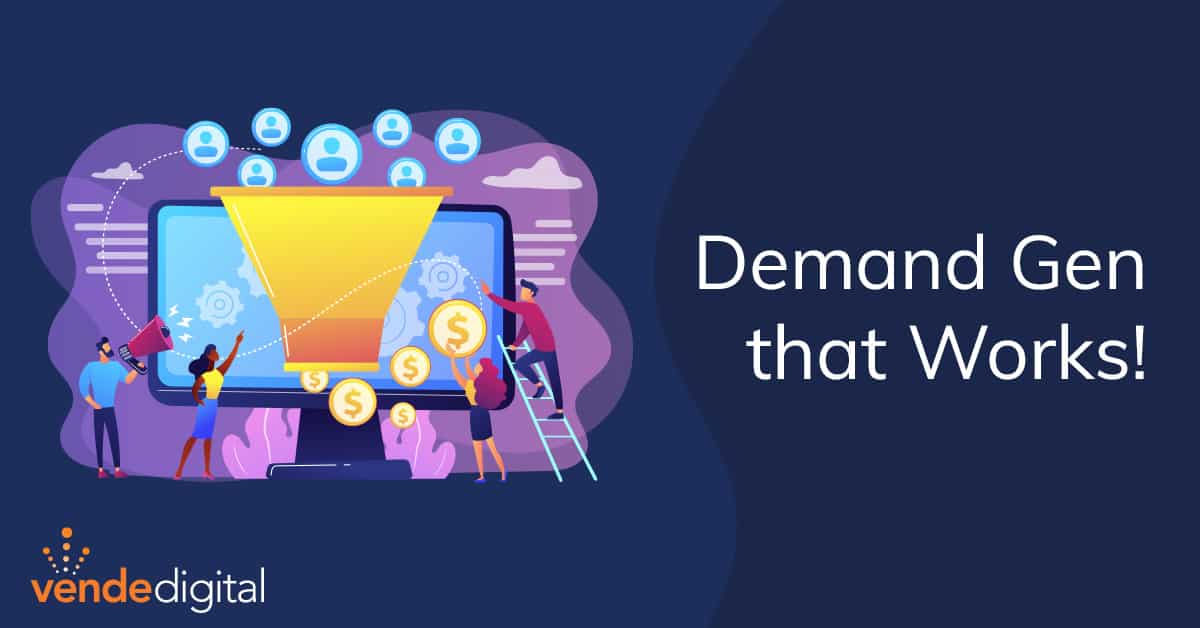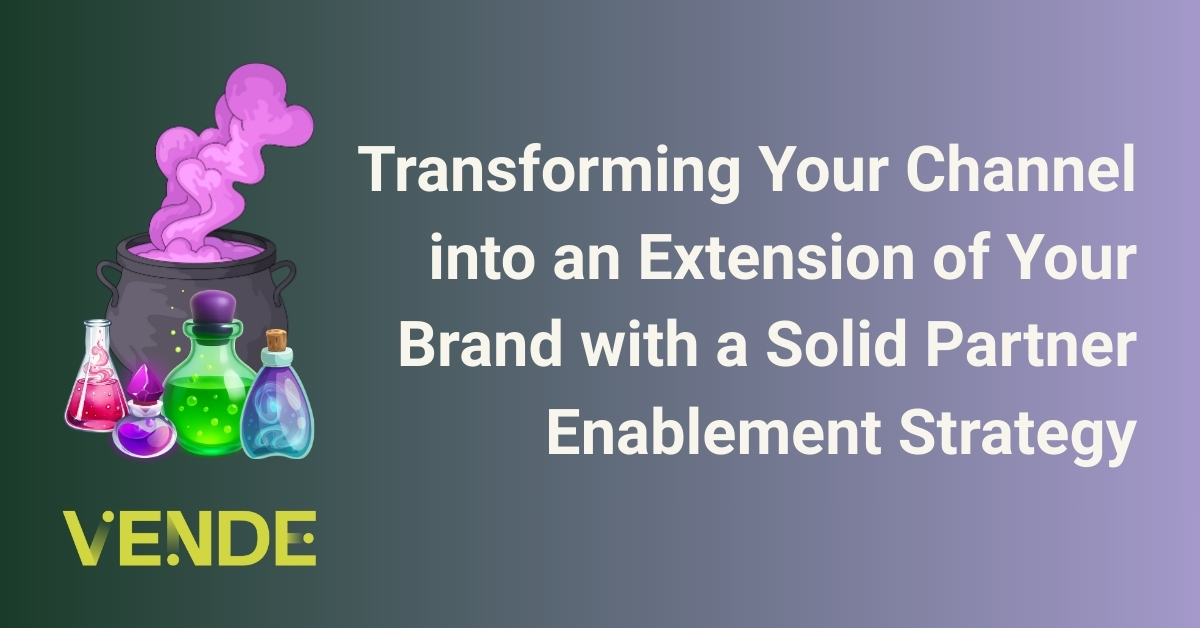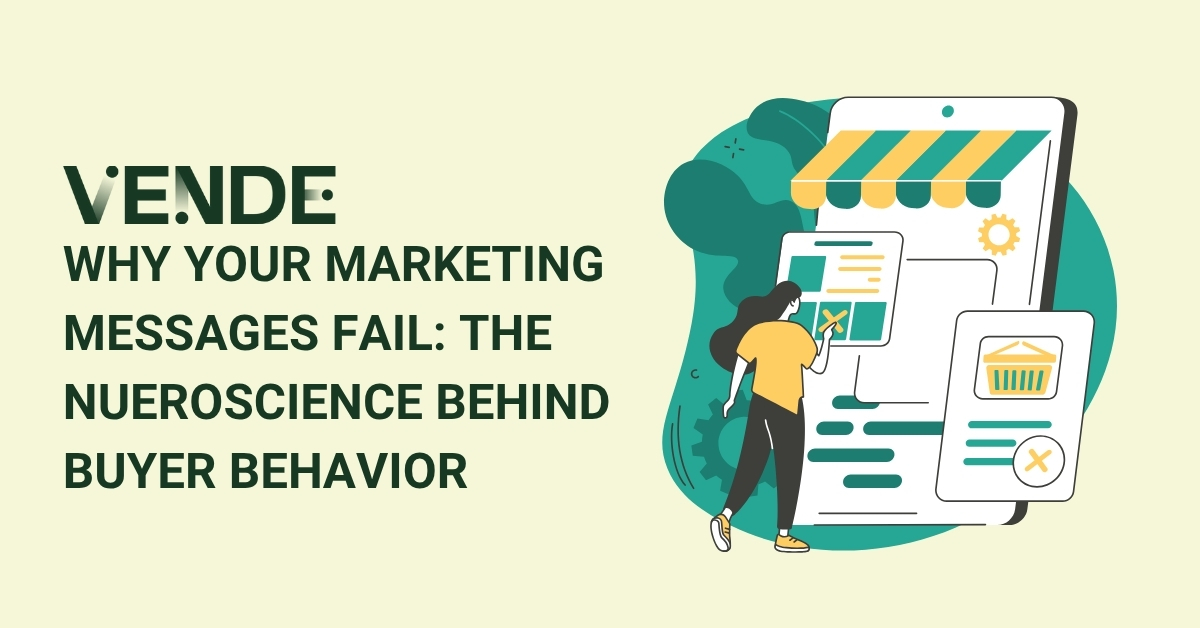
B2B Demand Generation Marketing: Seven Steps for Producing High-Quality Leads
There is a lot of talk about demand generation in the B2B marketing world, but the reality is not very many businesses are actually creating demand. What they’re doing is capturing demand that already exists.
While it’s important to find and close business with people who are in the market looking for a solution (capturing demand), you also need a framework for creating your own demand for your products and services.
The race is on, and competition is fierce. What if you could change the rules and be the only one in the race? That’s the promise of demand generation done correctly. In this article, we will show you how to use digital marketing to do just that.
For clarity, let's define these two strategies for the purposes of this article.
What is B2B Demand Generation Marketing?
Demand Generation marketing is creating demand for your brand, products/services by aligning targeted buyers’ business objectives with your unique ability to fulfill them. The goal is to educate and inform buyers early to help them see that there is a better way (your solution) to achieve their objectives.
Creating Demand = Lower competition, shorter sales cycles, higher close rates, and bigger margins. This is the smooth waters of the blue ocean where you have established yourself as the “preferred vendor” in the eyes of targeted prospects.
What is Lead Generation (Capturing Demand)?
Capturing Demand (AKA Lead Generation) is focused on going after buyers who are actively in-market for your products and services. These buyers know they have a problem that your category can solve. Their focus is to find the best overall solution for their business. Your goal is to do a better job differentiating your unique selling proposition (USP) than your competitors to win a fair share of the market.
Capturing Demand = Higher competition, commoditization of your offering, and lower close rates. This is the bloody red ocean where all of your “me too” competitors are fighting for the same customer.
Here’s the secret: B2B Demand Generation marketing requires patience and consistency. It’s not about getting someone to buy something this very minute. The goal is to establish yourself as the preferred vendor before the buyer moves into a buying cycle.
Unfortunately, the pressure to see quick returns causes many marketers to play the short game and capture demand. They are happy to check the MQL box and not worry about what happens down the road when the sales team has to fight it out with multiple competitors.
Think of it like tending your own orchard. You need to plant and water your trees first (demand gen) before you pick the fruit (capture demand). Without an orchard, you’d have to go into someone else's garden and fight for what little fruit you could grab.
B2B Demand Generation Marketing Engages Modern Buyers the Right Way
What is one thing all B2B buyers have in common? They are researching on their own. Buyers don’t like to engage sellers until they must and as late as possible. Garter says that buyers are 80% through the journey before they are ready to talk to a sales rep. This means that the buyer is identifying a need, prioritizing it relative to the other needs in the business, determining the needed features and potential suppliers before they ever engage with your reps. Often referred to as the dark funnel, the entire journey up until this point is mostly anonymous to you.
According to LinkedIn (chart below), nearly 90% of B2B buyers conduct research anonymously (in the dark funnel) during the buying process.
B2B Demand Generation marketing engages these anonymous buyers early in the process and delivers information relevant to their business objectives. It helps and guides buyers to understand the problems they have, the impact these problems are having on their business, and how to overcome them. It helps the buyer understand why they should move the problem you solve up in the priority list.
Demand Gen is like laying a trail of breadcrumbs leading buyers back to how your solution is able to help them achieve their business objectives better than competing priorities. Along the way, you create awareness, add value, and educate them on features of your offering that are true differentiators. This establishes your business as an authority and, in most cases, results in you becoming the preferred vendor.
According to TechTarget, a vast majority of B2B companies will ultimately choose to do business with the company that shows up first on their radar and adds value to their decision-making process (chart below). This is the impact Demand Generation marketing can have over tactics that simply capture demand.
7 Steps to Generate Demand For Your Business
Here are seven steps to get started with B2B demand generation marketing for your business.
Step One: Understand your Niche. You have a segment of customers today that LOVE you. To win at Demand Gen, you must discover the reason why. Invest the time to identify the niche you are most able to serve. For this group, you want your business to be the essential, one-of-a-kind value bringer in your category.
This is what Seth Godin calls the minimum viable audience. Once identified, you can focus your energy and marketing on getting a highly relevant message in front of your niche that will resonate much better than a watered-down, mass-market message will.
Take a look at your best customers and search for key commonalities. How big are they? What industries are they in? Where are they located? Also, consider their psychographic information. For example, at Vende Digital, we know that our ideal customer profile (ICP) consists of B2B marketing leaders that don't really want to execute digital marketing on their own. They're looking for an agency that can develop and execute a strategy for them, leaving them free to focus on other key priorities.
Step Two: Understand how your product/service influences your niche's ultimate goal. Get a team together (marketing and sales) and start by identifying the common outcomes your Niche/ICP are trying to achieve. Next, think through what impacts these outcomes. We call these “drivers.” Now ask yourself what influences the drivers. Next, determine the obstacles that are preventing them from accomplishing their desired outcome.
Now the fun part. Brainstorm with your team on what unique superpowers you bring to the table that can overcome the obstacles, influence the drivers, and help prospects achieve their desired outcomes.
Vende Digital Prospect Example:
- Ultimate Goal/Outcome = More pipeline and revenue
- Driver = Improved lead quality
- Influencer = Qualified traffic
- Obstacles = Lack of knowledge/plan, Poor execution, Competing priorities/bandwidth
- Vende Superpowers = Proven framework, Exclusive B2B focus, CEO/Chief Strategist with 20 years of industry experience, Experienced team with capabilities to execute all or part of the strategy, Constant testing/experimentation to stay ahead of the game.
Finally, battle-test your work by actually talking with customers and prospects and get their validation and prioritization on these key elements.
Step Three: Learn Their Buying Process. Stop trying to force the buyer through your sales process or marketing funnel. Take the time to map their buying process and identify what you can deliver at each stage. In other words, make it easy for buyers to buy!
Start by outlining what your ICP needs to learn at each stage of their process, starting from where they are today (unaware that the problem you solve should be a huge priority) to a better tomorrow (using your products and services).
Here are high-level buyer journey stages common in B2B:
- Buyer Recognizes a Need
- This is the most important step! Win by delivering information that opens their eyes to a problem, articulates why it’s happening, and shows a better way to solve it.
- Prioritize Against Other Needs
- Agitate the pain and help prospects understand the long-term implications. The pain of the status quo needs to become much greater than the pain of change.
- Explore & Evaluate Options
- Buyers buy from companies/people they believe understand their unique situation. Surround prospects with your brand and establish your team as subject matter experts. Provide insight on how your features/solution are best aligned to achieve the desired outcome
- Clearly & simply communicate the process to get engaged with your company
- Sales/Negotiation
- Leverage case studies that validate the investment
- Provide ROI analysis
Step 4: Identify 3-4 Content Pillars. Marketing is an exercise in memorization. Therefore, we must limit what we communicate in the content we create to ensure our prospects understand the problems we solve and how we can help them. Think of Content Pillars as stakes in the ground. Choose these three or four categories of content that you're going to write about carefully. They must connect the dots between your ICPs problems or desired outcome and your superpower(s).
Step 5: Create Remarkable Content. Once you have identified these Pillars, only write about them. This will keep your message focused and consistent.
When creating demand, your story doesn’t begin with your products; it leads to them. The buyer needs to think differently about their business before they think about your solution. The goal of your content should be to communicate ‘Hey. There’s a better way. Let me show you how.’
Less is more here. It is better to create fewer content items tied to your Pillars that are really helpful for the buyer than to create a lot of watered-down fluff pieces. However, it is critical to repurpose your content into formats that matter to your ICP. In the chart below, you’ll see all the different formats that are consumed by B2B buyers at different stages.
Source:Content Marketing for Demand Generation Survey: Content Marketing Institute
Content is the fuel that drives Demand Generation. Produce content that you are proud of, aligns with the buyer journey, and helps the prospect. Remarkable Demand Gen content should check each of the following boxes:
Ask yourself these questions to make sure you’re producing useful content that leads to your USP:
- What problems are prospects keenly aware of? Look for issues that have high pain points and are relatively easy to solve with your solution.
- What are the symptoms or signs that show the prospect has a problem?
- How are prospects dealing with the problem today? How is that a poor alternative compared to your better way?
- How do these problems make them feel?
- What do prospects fail to understand that is hurting them?
- What could we teach prospects that would lead to better results?
- What does a better tomorrow look like?
- What are the actions they should take to get there?
- What does life look like if they don’t solve this problem now?
- What does life look like after they solve this problem with our solution?
- How can you make working with you a safe and “no brainer” decision?
Finally, make sure each content piece is high-quality by asking these questions before you publish:
- Does this move the prospect forward (create momentum)?
- Does it teach them something new?
- Will they feel differently about the company, or was our value reinforced?
Step Six: Promote the Content You Create. Promoting your content is just as important as creating it. Distribute your content effectively by promoting it where your prospects go for information and to learn. This includes social media through your company page, key employees (i.e., sales), and with ads (yes. ads).
Why wouldn’t you use ads? Promoting your content with ads is guaranteed delivery of your message to your ICP. There is no better way to get your content out there. Would you try to sell your home by just telling a few friends and neighbors? Of course not. It’s exactly the same with your content.
Step Seven: Turn Your Website Into a Buying Resource. This is the opposite of what most B2B websites are today. Most are bloated, wordy brochures that have the “me” problem (it’s all about me, me, me, me). Prospects don’t care about you. They only care about making the right decision for their business.
Your website must become the place where a prospect goes to learn everything they need to know in order to make a purchase decision. Your website must establish authority and empathy and give buyers a plan forward. Check out our B2B Website User Experience Checklist to learn how to make your website a buying resource.
Use B2B Demand Generation Marketing to Win Online
The key to successful demand gen is showing up at the right time and the right place with information that helps prospective buyers establish your company as the preferred vendor. Follow these seven steps and move from only capturing demand to actually generating your own demand to establish your company as the preferred vendor way ahead of your competition. The promise is higher quality leads, lower competition, shorter sales cycles, and better margins.
Key Takeaways:
- Demand Generation and Lead Generation (Capturing Demand) are not the same things.
- Implementing a B2B Demand Generation marketing strategy will help you establish your company as the preferred vendor before your competitors.
- Demand Gen is not about mass marketing but rather identifying your niche and becoming the essential, one-of-a-kind value bringer in your category
- Creating and promoting helpful content that challenges the status quo and helps buyers see a better way to achieve their objectives is the fuel that makes demand generation work.
How Can We Help?
Finding the time to build and execute a strategy like this can be challenging. If you’d like help thinking through and implementing a successful B2B Demand Generation marketing effort, schedule a complimentary discovery meeting with our team. We’ll take the time to learn about your business and give you an action plan on how to achieve your goals.







